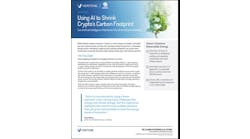Mike Gordon, Joule Assets CEO
Two topics keep cropping up in our conversations with energy efficiency insiders: 1) Joule Assets’ new investment fund 2) Microgrid.
So we recently brought the two together by asking Joule Assets CEO Mike Gordon about the investment potential for microgrid.
Joule Assets made headlines in January with the launch of its $100 million Energy Reduction Assets Fund, which invests in energy efficiency for the much-overlooked small to medium business. (Part 1 of this two-part series talks about the fund’s first deal.)
Gordon’s view on microgrid? Joule Assets will jump in if someone offers the right microgrid deal. But the space is still in flux with rules and markets that are emerging.
The future, Gordon said, lies in multi-stakeholder microgrid projects. Right now microgrids tend to be single party projects. A developer signs a contract with a big counter-party, like a hospital, military facility or university, to install a combined heat and power plant backed by a long-term power agreement. Investors offer financing that is secured by the credit of the counterparty.
But the “real potential” of microgrid lies in the “ability to take entire distribution loops off the system,” loops that can operate both connected and disconnected from the grid.
This kind of system can reduce transmission and congestion costs and create resiliency and reliability – not just for microgrid customers but the larger macrogrid, as well.
From Gordon’s perspective, regional transmission organizations will determine the success of the microgrid industry in the United States. The microgrid must be in an RTO where it can sell capacity and ancillary services as an aggregated asset with its own reliability standard at the distribution level.
Most of the RTOs aren’t there yet.
“The only one that is effectively moving in that direction to date is the PJM Interconnect,” he said.
In California and New England, the ancillary services markets “are not valuable enough or free market enough,” he said. In New York, the ancillary services market isn’t “accessible enough to aggregated demand participation to spur the microgrid.” The Midwest market lacks enough value and has no reliability component. ERCOT (Texas) has capacity market challenges.
So work remains in educating markets and encouraging rules to foster microgrid as an asset class.
“I won’t say somebody can’t structure an investment opportunity for us that we would jump at in the microgrid space. We’d love it. But we need some of those secure cash flows as a foundation, and we need some real opportunity to create value,” he said.
Are you interested microgrids? Keep up on the news by joining our new LinkedIn group, Microgrid Knowledge.







